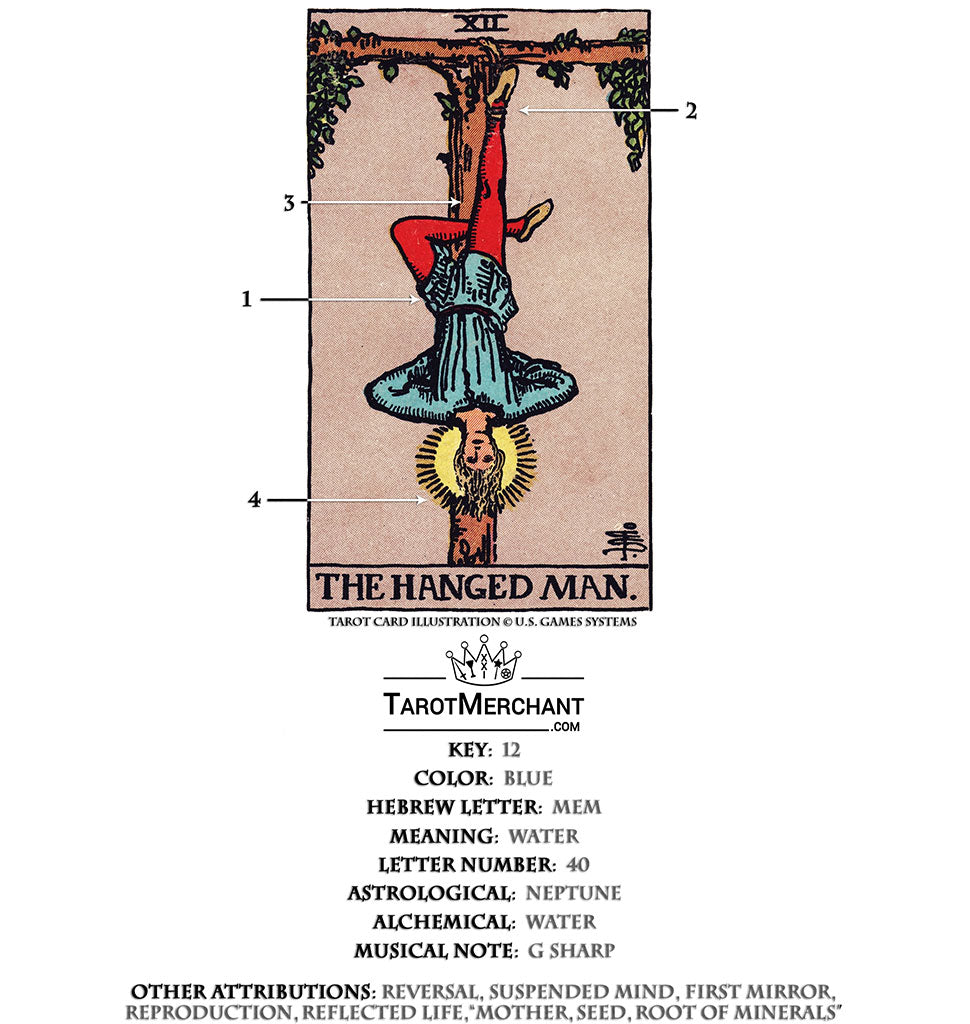The Hanged Man is a captivating card within the Tarot deck, often renowned for its complex symbolism and nuanced interpretations. From a Christian perspective, this card resonates with themes of sacrifice, surrender, and transformation. The image traditionally depicts a figure suspended upside down, evoking contemplation on the nature of martyrdom and divine purpose. This article explores the multifaceted meanings of The Hanged Man, particularly how it intertwines with Christian doctrine and spirituality.
1. The Symbolism of Sacrifice
In Christianity, sacrifice occupies a pivotal role. The Hanged Man embodies the essence of self-sacrifice, inviting individuals to reflect on the sacrifices made for the greater good. Historically, Jesus Christ is viewed as the ultimate martyr, laying down His life for humanity’s salvation. The card invites believers to consider the sacrifices they are called to make within their own lives—whether it be relinquishing desires, grappling with personal trials, or serving others selflessly.
This card encourages a thoughtful examination of how personal sacrifice can lead to spiritual elevation. The concept of giving oneself for a higher purpose resonates profoundly within Christian narrative, prompting the inquiry into ways one may serve their community or faith.
2. The Theme of Surrender
Surrendering to divine will is a recurring theme in Christian teachings. The Hanged Man represents the act of yielding, portrayed by the figure whose limbs hang loosely, symbolizing an acceptance of life’s uncertainties. This contrasts sharply with the human tendency to cling to control. In scripture, believers are encouraged to submit to God’s plan, as seen in verses such as Proverbs 3:5-6. This submission often requires a relinquishing of personal ambitions and a trust that God’s guidance will lead to greater fulfillment.
The nuance of surrender is significant. It embodies not just passivity but an active embrace of faith, recognizing that divine intervention and timing often transcend individual understanding. The card prompts reflection on how surrendering to God’s will can illuminate one’s path, portraying challenges as opportunities for spiritual growth.
3. Transformation through Trials
The Hanged Man also delineates the transformational aspect inherent in life’s trials. In the Christian context, suffering is not merely an unfortunate occurrence but a catalyst for growth and renewal. The imagery of hanging upside down suggests a different perspective, urging believers to see their struggles as transformative experiences. Scriptural accounts, such as the metamorphoses endured by Job, underscore the potential for dignity and grace found in adversity.
This transformational journey mirrors the crucifixion and resurrection narrative, wherein death precedes new life. The Hanged Man encapsulates this paradox—suggesting that those who endure hardship in faith may ultimately emerge stronger, enlightened, and reborn in spirit.
4. A Call to Reflection
Reflection is another profound element illustrated by The Hanged Man. The figure’s serene expression invites introspection and meditation. Christianity places a significant emphasis on the importance of contemplation and prayer, acting as a means to connect with God’s spirit and glean insights into one’s life journey.
This card beckons individuals to pause and examine their motivations, ambitions, and the weight of their choices. It advocates for mindfulness in understanding one’s purpose and role within the tapestry of faith. Engaging in this kind of reflection can lead to renewal and clarity, akin to the biblical practice of self-examination encouraged during periods of fasting and prayer.
5. Embracing Paradox
In exploring The Hanged Man’s meaning, one cannot overlook the inherent paradoxes present. This duality invites an acceptance of life’s complexities—joy often intertwined with sorrow, and triumph following tribulation. The Christian faith thrives on these paradoxes, where death is followed by resurrection, and humility is exalted.
The card embodies spiritual lessons that lifestyle and belief are rarely straightforward. It can symbolize the contemplation of opposing forces, such as faith versus doubt. This tension can be necessary for deeper understanding and commitment. Embracing these contradictions can be enlightening, reinforcing that spiritual growth often requires navigating through confusion and uncertainty.
6. Community and Connection
The Hanged Man is not solely a solitary figure; rather, it invites contemplation of community and its role in spiritual journeys. Relationships and fellowship are fundamental in Christianity, emphasizing that one’s trials often impact the collective human experience. In many instances, personal sacrifices serve not only oneself but resonate within the community, fostering connectivity and mutual support.
This underscores the importance of interdependence. Each person’s struggles can serve as a bridge of compassion and understanding, illustrating that, though one may feel suspended in their trials, they are never truly alone. Encouraging a supportive community can magnify the joys and ease the burdens imposed by struggles.
7. Final Reflections on Faith and the Journey
Ultimately, The Hanged Man serves as a reminder of the contemplative journey inherent in the Christian faith. It emphasizes the profound meaning embedded within moments of stillness, sacrifice, and reflection. The ability to surrender to God’s will, understand trials as transformative, embrace the complexity of life, and nurture community connections offers depth to the card’s interpretation.
As individuals confront their own “hanging” moments, The Hanged Man encourages acceptance of life’s ebb and flow, promoting spiritual resilience through faith and introspection. In this way, the card becomes not just an emblem of sacrifice but a herald of hope, illuminating paths of understanding, compassion, and transformation.









Leave a Comment